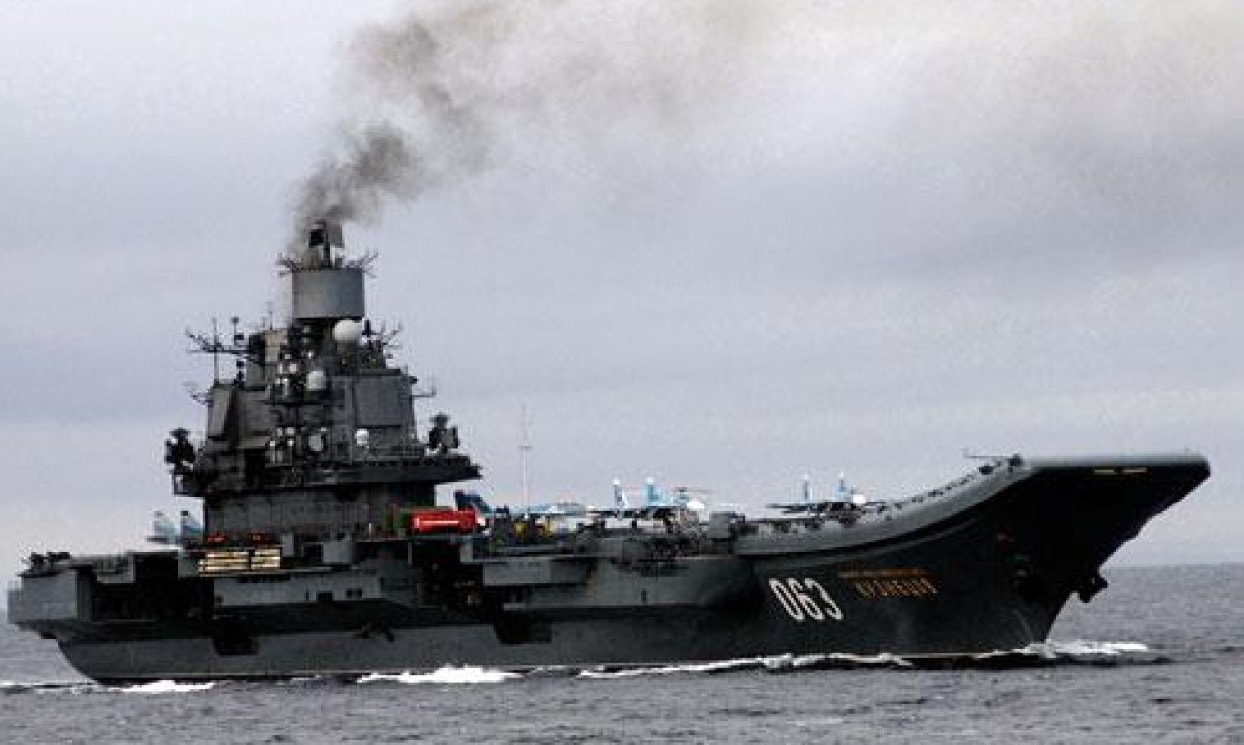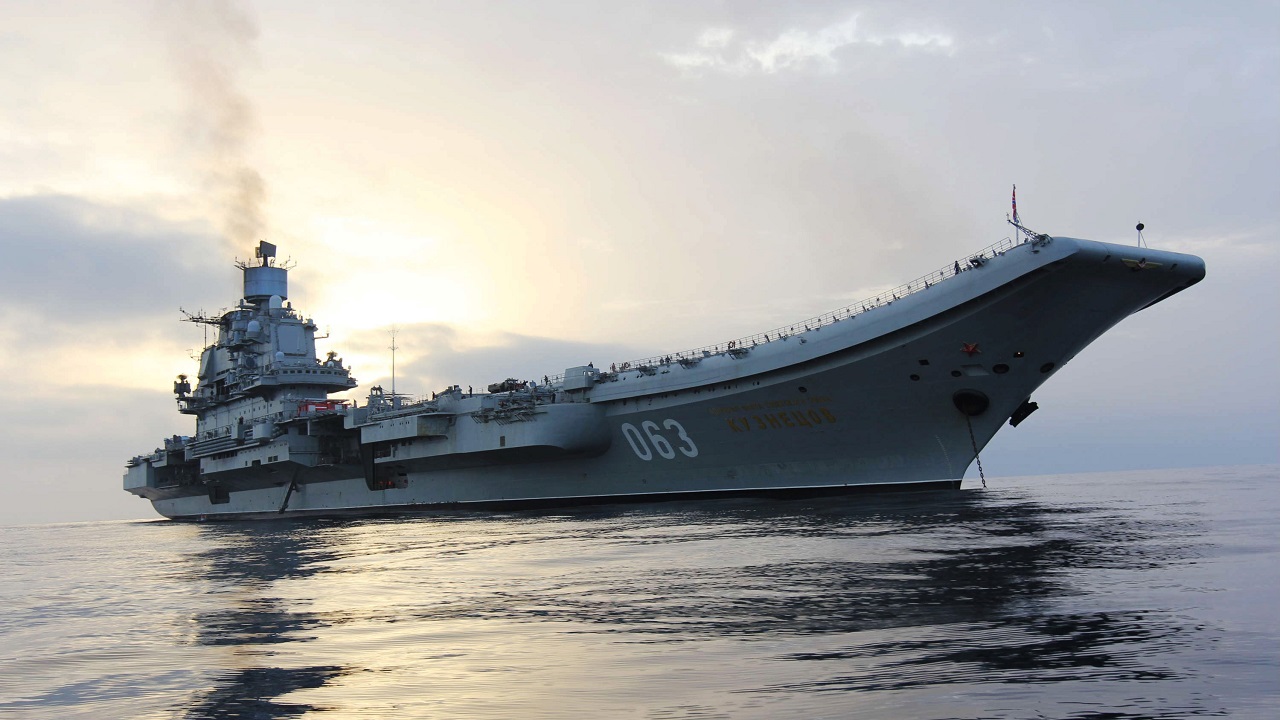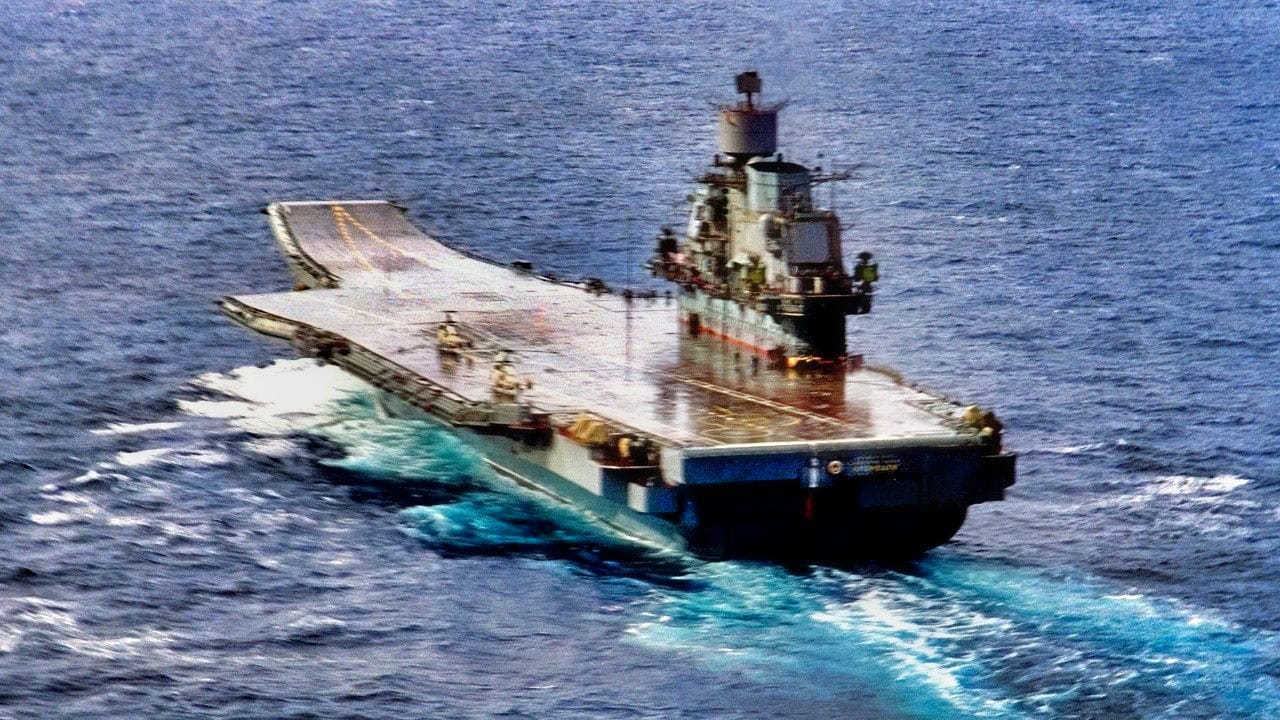Summary and Key Points: Russia’s Admiral Kuznetsov aircraft carrier is unlikely to return to active service due to severe structural, technological, and maintenance issues.
-Over a decade ago, the U.S. Navy even expressed concerns that it could sink.

Image: Creative Commons.
-Its last significant deployment off Syria in 2016 was plagued by aircraft crashes, engine failures, and operational inefficiencies, including faulty arrestor cables.
-Structural deterioration, such as corrosion and flooding, further raises doubts about its future viability.
-Given the carrier’s persistent failures and outdated design dating back to the Soviet era, continued investment in repairs seems impractical, suggesting Russia would be better served retiring the problematic vessel.
Why Russia’s Admiral Kuznetsov Carrier May Never Sail Again
There are many reasons why Russia’s Admiral Kuznetsov aircraft carrier is not likely to see operational deployment anytime soon, as it has been plagued with problems and is dry-docked for ongoing repairs in what seems like an endless series of technological, structural, and maintenance issues.
In fact, this Russian aircraft carrier was in such bad shape that over a decade ago, the U.S. Navy was actively worried it could sink while out to sea.
There is already considerable skepticism about whether the troubled vessel will ever sail again. Yet, a cursory look at its deployment history lends additional evidence suggesting the ship should not operate in the future.
In the 2016 timeframe, Russia deployed its Kuznetsov aircraft carrier off the coast of Syria in support of the Assad regime during the civil war.
While some airstrikes launched from the Kuznetsov did attack ISIS forces during the ongoing conflict, there were a series of significant failures related to the aircraft, which suggests that the platform should not operate again.
The problems experienced on this deployment are numerous and significant, ranging from engine failure of its aircraft to launching problems and fighter-jet crashes. A 2016 BBC news report tracking the Kuznetsov in November 2016 reported that a Russian carrier-launched MiG-29K crashed in the Mediterranean while circling the ship.
The Russian Defense Ministry was quoted explaining the crash as the result of mechanical failure, yet other assessments added additional detail.
Accounts of the crash further add that problems with the ship’s “arrestor cables” were cited as part of the failure. Multiple press accounts from the carrier’s deployment off Syria say the Kuznetsov carried out more than 400 combat missions, more than 1,000 enemy targets in Syria.
A group of ships joined the Russian carrier off the Syrian coast intended to attack rebel targets near Aleppo in support of the Assad regime during the civil war.
Built-in Problems
Apart from its series of operational problems, setbacks, and mishaps, the Admiral Kuznetsov was reportedly built with structural problems and outdated systems, according to an article in The National Interest.
“Plagued by poor craftsmanship, outdated systems, and environmental issues like belching thick black smoke due to its Mazut fuel, the carrier has faced problems since its inception during the Soviet Union’s final years. Notably, during its deployment in the Syrian Civil War, the U.S. Navy monitored it—not out of fear, but anticipating it might sink,” the TNI essay says.
Part of the problem with the Russian carrier was also documented in a significant essay in a November 19FortyFive article citing ship-repairmen’s findings on the carrier in Russia’s Pravda newspaper.

Admiral Kuznetsov in the waters south of Italy with USS Deyo, foreground, steaming off her port side.
“Ship repairmen warned the military that the condition of Admiral Kuznetsov does not allow it to be deployed due to the high probability that it would sink or capsize. During the examination, it was revealed that the metal structures below the third deck of the ship were significantly corroded. The holds are filled with muddy water, which makes it impossible to examine the ship in detail from the inside,” the Pravda paper states.
All of this evidence related to the Kuznetzov’s failed deployment and Russia’s continued Naval problems in the Black Sea operating against Ukraine would suggest that Russia would likely be “ill-served” to attempt to deploy the troubled ship again and bring it back into operational service.

Admiral Kuznetsov Aircraft Carrier from Russia. Image Credit: Creative Commons.
About the Author: Kris Osborn
Kris Osborn is the Military Technology Editor of 19FortyFive and President of Warrior Maven – Center for Military Modernization. Osborn previously served at the Pentagon as a highly qualified expert in the Office of the Assistant Secretary of the Army—Acquisition, Logistics & Technology. Osborn has also worked as an anchor and on-air military specialist at national TV networks. He has appeared as a guest military expert on Fox News, MSNBC, The Military Channel, and The History Channel. He also has a Masters Degree in Comparative Literature from Columbia University.

